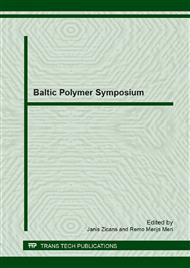[1]
Directive 2008/121/EC of the European Parliament and of the Council of 14 January 2009 on textile names (recast), Official Journal of the European Union, 23.01.2009, L. 19-48.
Google Scholar
[2]
Directive 94/11/EC of the European Parliament and of the Council of 23 March 1994 on the approximation of the laws, regulations and administrative provisions of the Member States relating to labelling of the materials used in the main components of footwear for sale to the consumer, Official Journal of the European Union, 19.04.1994, L. 37-41.
DOI: 10.5040/9781472559500.0009
Google Scholar
[3]
T.M. Kolomiets, N.V. Pritulska, O.L. Romanenko, Examination of goods, Kyiv nats. torg.- ekon. un-t, Kyiv (2001) (in Ukrainian).
Google Scholar
[4]
E.Ya. Mikheeva, L.S. Belyaev. Modern methods of assessing the quality of shoes and shoe materials, Legkaya i pischevaya prom-t, Moskva (1984) (in Russian).
Google Scholar
[5]
Yu.I. Fordzyun, Graphically-numerical method of comprehensive assessment hygienic properties of shoe materials, Bulletin of KhNU 1 (2011) 239-243 (in Ukrainian).
Google Scholar
[6]
Yu.I. Fordzyun, O.A. Andreyeva, Psychophysical aspect of discomfort feeling in the «consumers-footwear-external environment» system, Bulletin of KNUTD. 1 (2011) 132-137 (in Ukrainian).
Google Scholar
[7]
Yu.I. Fordzyun, O.A. Andreyeva, Interrelation between psychic, physiological and physical feelings of discomfort in the system «consumer-footwear-environment», Bulletin of KNUTD. 4 (2011) 97-103 (in Ukrainian).
Google Scholar
[8]
K.M. Zurabyan, B.Ya. Krasnov, M.M. Bernshtein, Materials Engineering of leather goods, Legprombytizdat, Moskva (1988) (in Russian).
Google Scholar
[9]
V.M. Rudenko, Mathematical Statistics, Tsentr uchbovoi literatury, Kyiv (2012) (in Ukrainian).[10] S.V. Kanth, A. Ipe, B. Madhan, R. Venba, A. Dhathathreyan, Effect of different retanning systems on surface properties of leather, JALCA. 102 (2007) 135-142.
Google Scholar
[11]
W. Hongru, M. Yuanyue, N. Yue, An oil process accelerated by oxidation with sodium percarbonate, J. Soc. Leather Technol. Chem. 92 (2008) 205-209.
Google Scholar
[12]
S. Sorolla, M. Jorba, X. Marginet, J.C. Castell, LL. Olle, A. Bacardit, Design of scaffolds for biopelt from tanning sector by-products, J. Soc. Leather Technol. Chem. 94 (2010) 190-199.
Google Scholar


